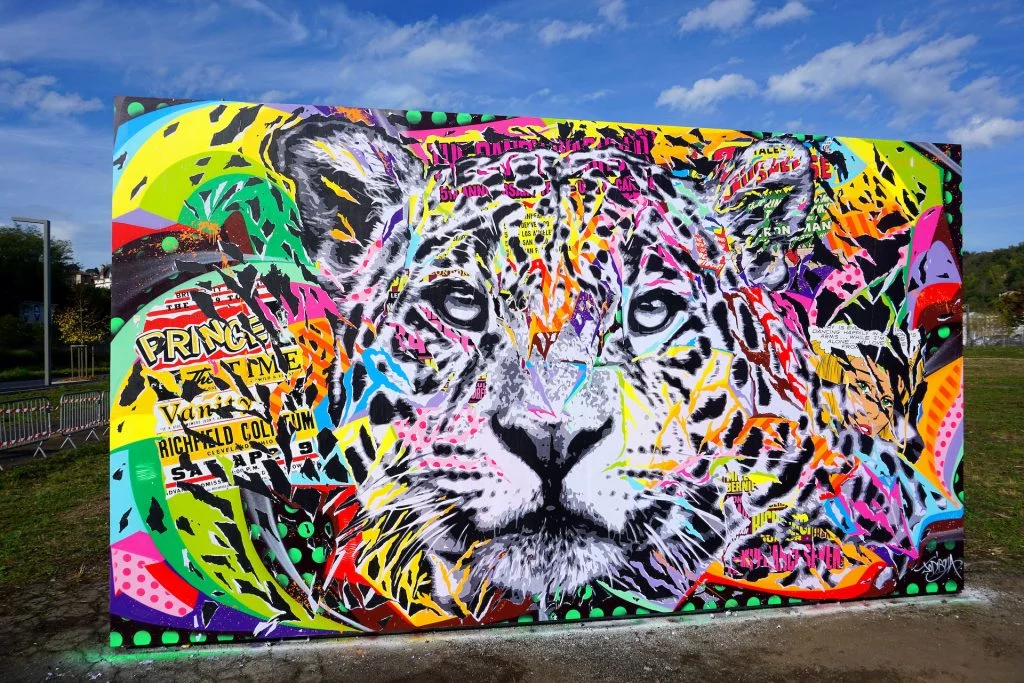
In the small town of Decazeville, nestled in the heart of France, a unique urban art movement has taken hold. Street Art Decazeville, as it has come to be known, is a vibrant and colorful expression of creativity that adorns the walls of this otherwise unassuming town. What was once a gray and mundane landscape has now been transformed into a living canvas, showcasing the talent and imagination of local artists.
The origins of Street Art Decazeville can be traced back to a group of passionate artists who wanted to make a statement. They longed to bring art out of the traditional confines of galleries and museums and into the streets, where it could be appreciated by all. Armed with spray cans and paintbrushes, these artists set out to break free from the conventional boundaries of art and create something truly unique.
What sets Street Art Decazeville apart from other urban art movements is its focus on community and storytelling. Each mural tells a story, whether it be a reflection of local history, a celebration of nature, or a social commentary on contemporary issues. These murals serve as a visual narrative, bringing life and meaning to the streets of Decazeville.
Street Art Decazeville has not only revitalized the aesthetic of the town but also brought people together. The art has become a point of pride for the community, fostering a sense of unity and creating a shared experience for locals and visitors alike. It has become a popular attraction, drawing tourists from near and far who are eager to admire the striking murals that adorn the buildings.
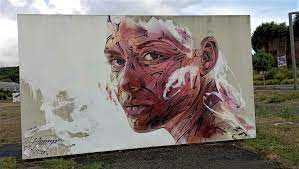
Street art is an artistic movement that is deeply rooted in urban culture. It encompasses various forms of art, including murals, graffiti, stencil art, and installations. What sets street art apart is its accessibility and the fact that it is created in public spaces, often without permission.
Street art provides a platform for artists to express their creativity and share their messages with a wider audience. It is a form of art that is accessible to all, regardless of social or economic background. This democratic nature of street art makes it a powerful tool for social and political commentary.
One of the key characteristics of street art is its ability to interact with its surrounding environment. Unlike traditional art forms confined to galleries, street art is immersed in the urban landscape. Artists consider the architectural features, textures, and colors of the cityscape, transforming plain walls and spaces into captivating works of art.
Another essential element of street art is its ephemeral nature. Many street art pieces are temporary and transient. They can be painted over, removed, or gradually deteriorate over time. This impermanence adds an element of excitement and surprise to the street art scene, as new artworks constantly emerge and evolve.
Street art often challenges conventional notions of art and pushes the boundaries of creativity. It allows artists to experiment with different techniques, styles, and materials. Street artists utilize a wide range of tools, from spray paint to stencils, to create their distinct visual language.
Moreover, street art fosters a sense of community and cultural identity. It often reflects the local history, social issues, and cultural diversity of the city it is found in. Street art can serve as a catalyst for dialogue and engagement, encouraging viewers to think critically about their surroundings and the messages conveyed by the artwork.
In summary, the essence of street art lies in its accessibility, interaction with the urban environment, transience, experimentation, and ability to foster community and cultural identity. It is a vibrant and dynamic form of art that continues to evolve and push boundaries, captivating audiences worldwide.
Decazeville: The Canvas for Street Art
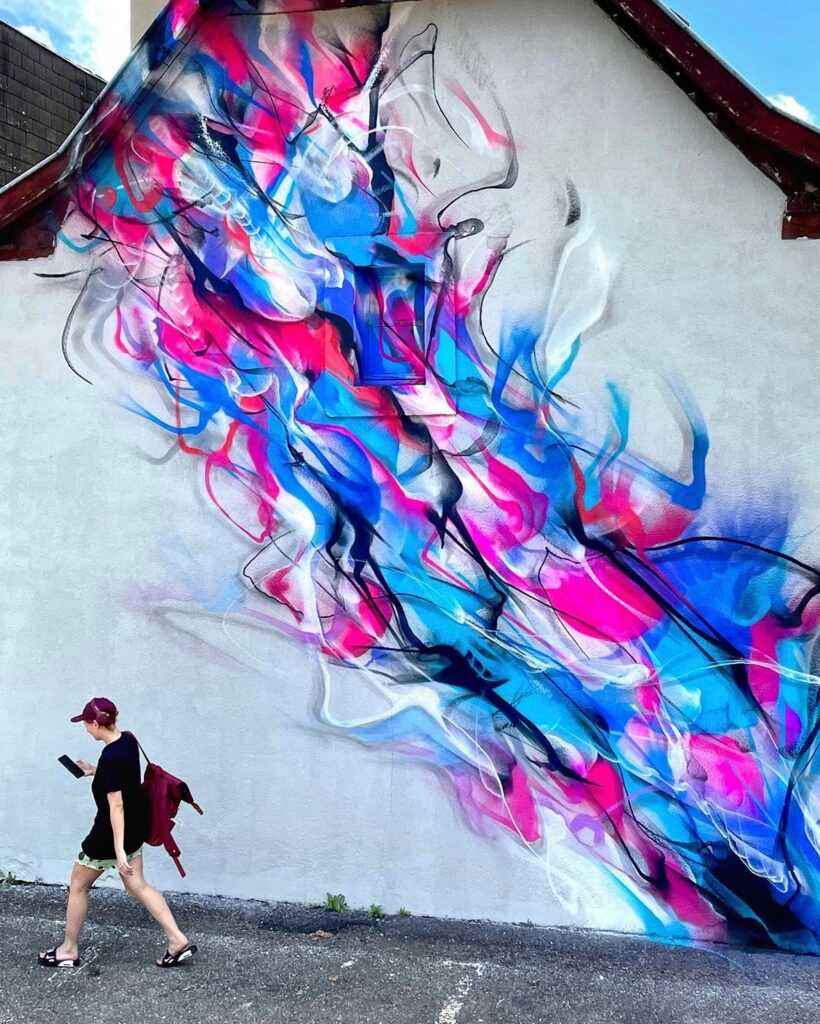
Decazeville, a small town located in southwestern France, has become a hub for urban mural painting. With its historic buildings and vibrant community, it provides the perfect canvas for street artists to express their creativity.
Walking through the streets of Decazeville, one cannot help but be captivated by the stunning murals that adorn its walls. These vibrant artworks tell stories, convey messages, and spark conversations among visitors and locals alike.
A Creative Movement
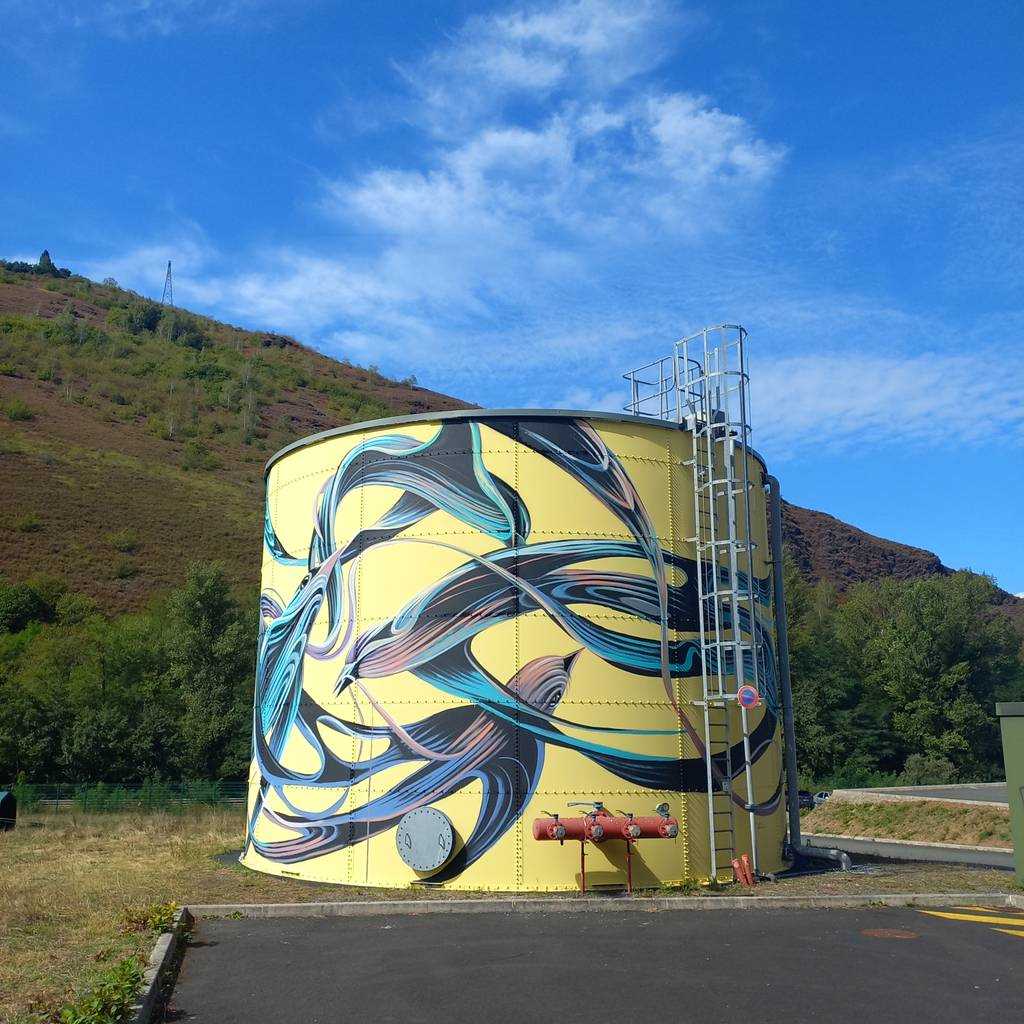
The street art movement in Decazeville began several years ago when a group of young artists decided to transform the town’s gray walls into colorful masterpieces. Inspired by the works of renowned street artists, they set out to bring the spirit of urban art to their community.
Decazeville soon became a magnet for both local and international street artists, who were drawn to the town’s supportive environment and blank canvases. The movement gained momentum, and soon, the once overlooked walls of the town became transformed into a vibrant outdoor gallery.
Exploring Decazeville’s Street Art
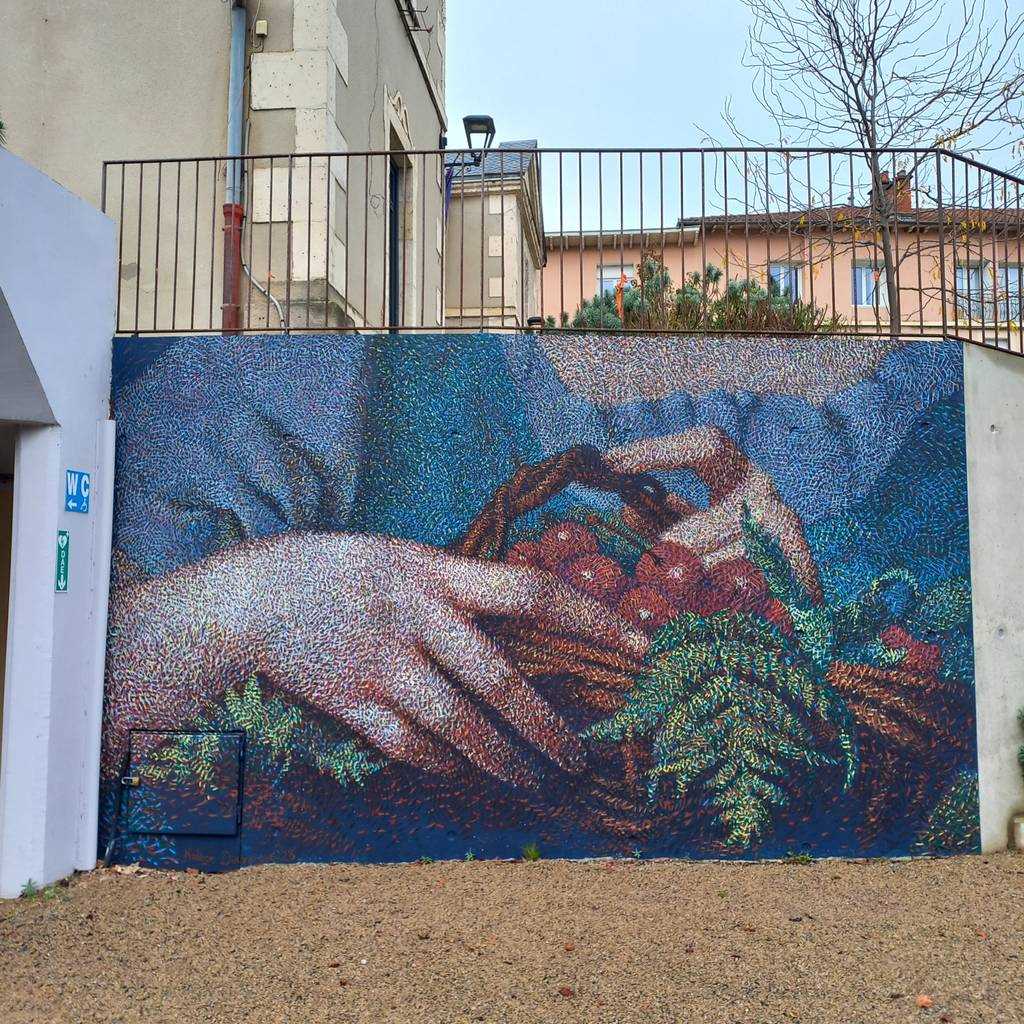
One of the best ways to experience Decazeville’s street art scene is by taking a walking tour. Visitors can wander through the town’s streets, discovering hidden gems and larger-than-life murals at every turn.
Each mural in Decazeville has its own unique style and message. Some showcase intricate patterns and vibrant colors, while others depict realistic portraits or abstract designs. The diversity of styles and themes reflects the diverse group of artists who have left their mark on the town.
Decazeville’s street art not only enhances the aesthetics of the town but also contributes to its cultural identity. It has become a symbol of creativity, revitalization, and community pride. The murals serve as a reminder of Decazeville’s rich history and a celebration of its present moment.
Whether you’re a street art enthusiast or simply intrigued by the power of public art, Decazeville’s vibrant urban mural painting movement is not to be missed.
The Evolution of Urban Art
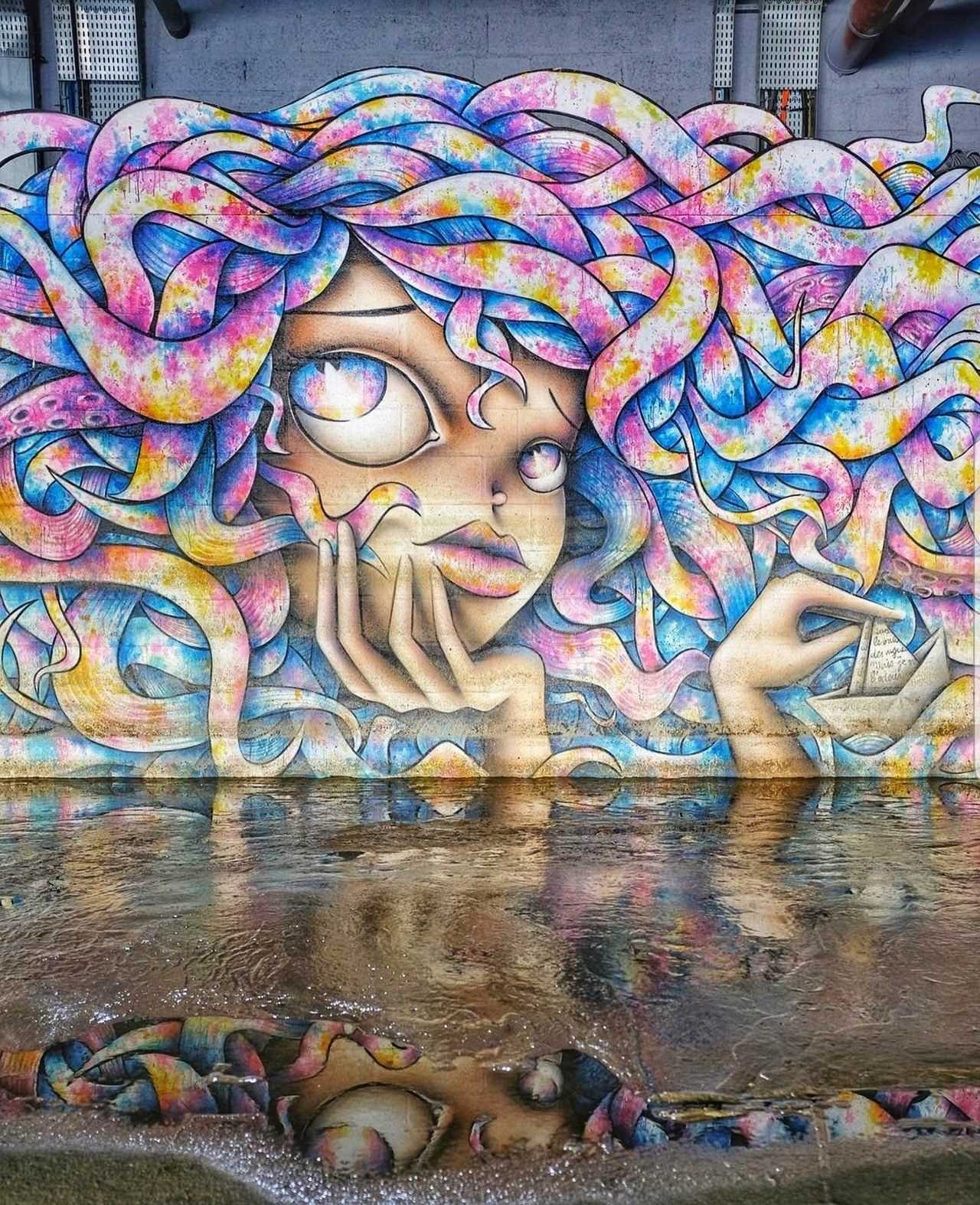
Early Beginnings
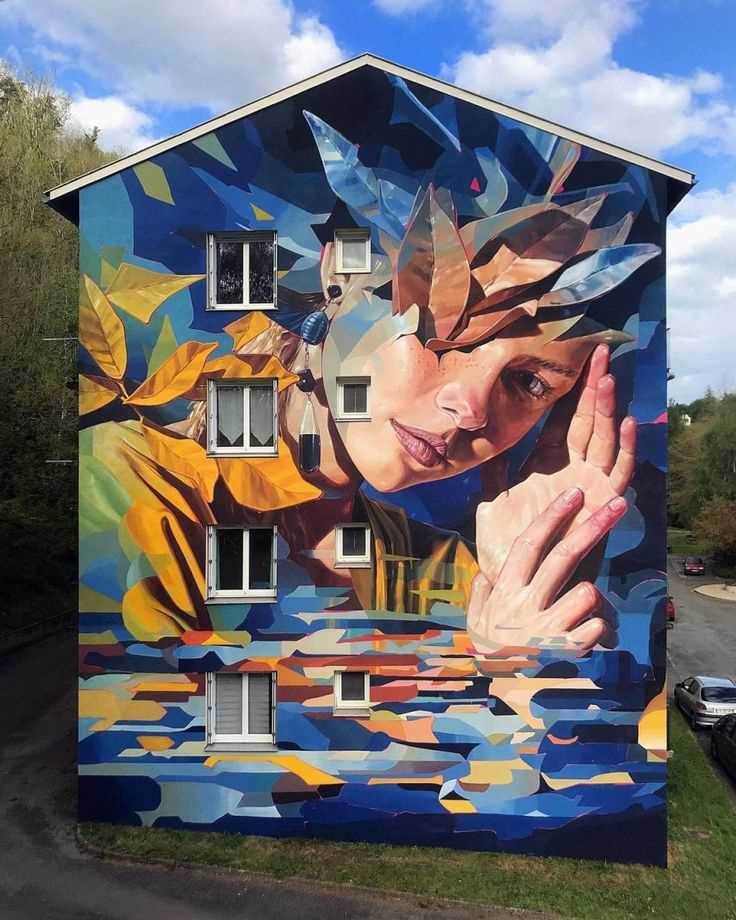
The roots of urban art can be traced back to ancient civilizations, where people used public spaces to express themselves through murals and carvings. In ancient Rome, for example, walls were adorned with political and social messages.
However, it wasn’t until the 20th century that urban art started to take on a more modern form. Artists like Jean-Michel Basquiat and Keith Haring emerged in the 1970s and 1980s, using public spaces as their gallery and creating art that reflected the urban landscapes and social issues of the time.
The Rise of Graffiti
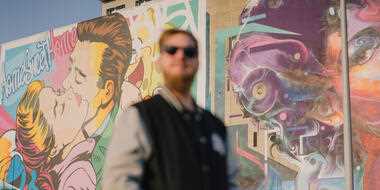
In the 1980s, graffiti became a prominent form of urban art, especially in cities like New York. Graffiti artists would tag their names or create intricate designs on buildings, trains, and walls, often with the risk of getting caught by the authorities.
While graffiti was seen as illegal and disruptive, it also served as a voice for marginalized communities and a way to reclaim public spaces. Artists like Banksy gained international recognition for their unique stenciling techniques and thought-provoking messages.
From Vandalism to Art
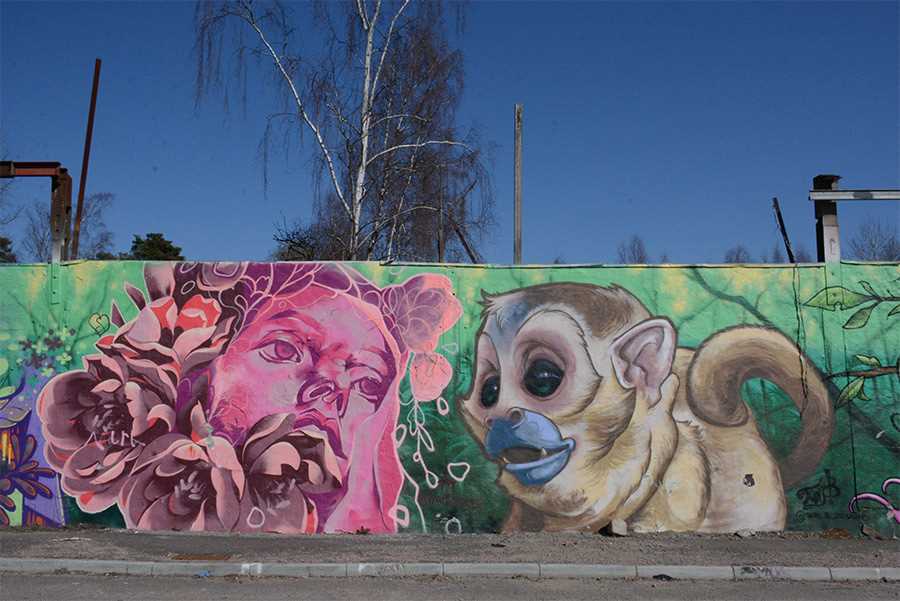
Over time, urban art has started to shed its negative connotations in the eyes of the public. Cities have begun to embrace street art as a way to beautify neighborhoods and showcase local talent.
Urban art festivals and events have emerged worldwide, bringing together artists from different backgrounds to create large-scale murals and installations. These events not only provide artists with a platform to showcase their work but also engage with the community and spark conversations about various social issues.
Today, urban art continues to evolve and push boundaries. Artists are using new technologies and techniques to create immersive experiences, blending traditional art forms with digital media.
A Global Movement
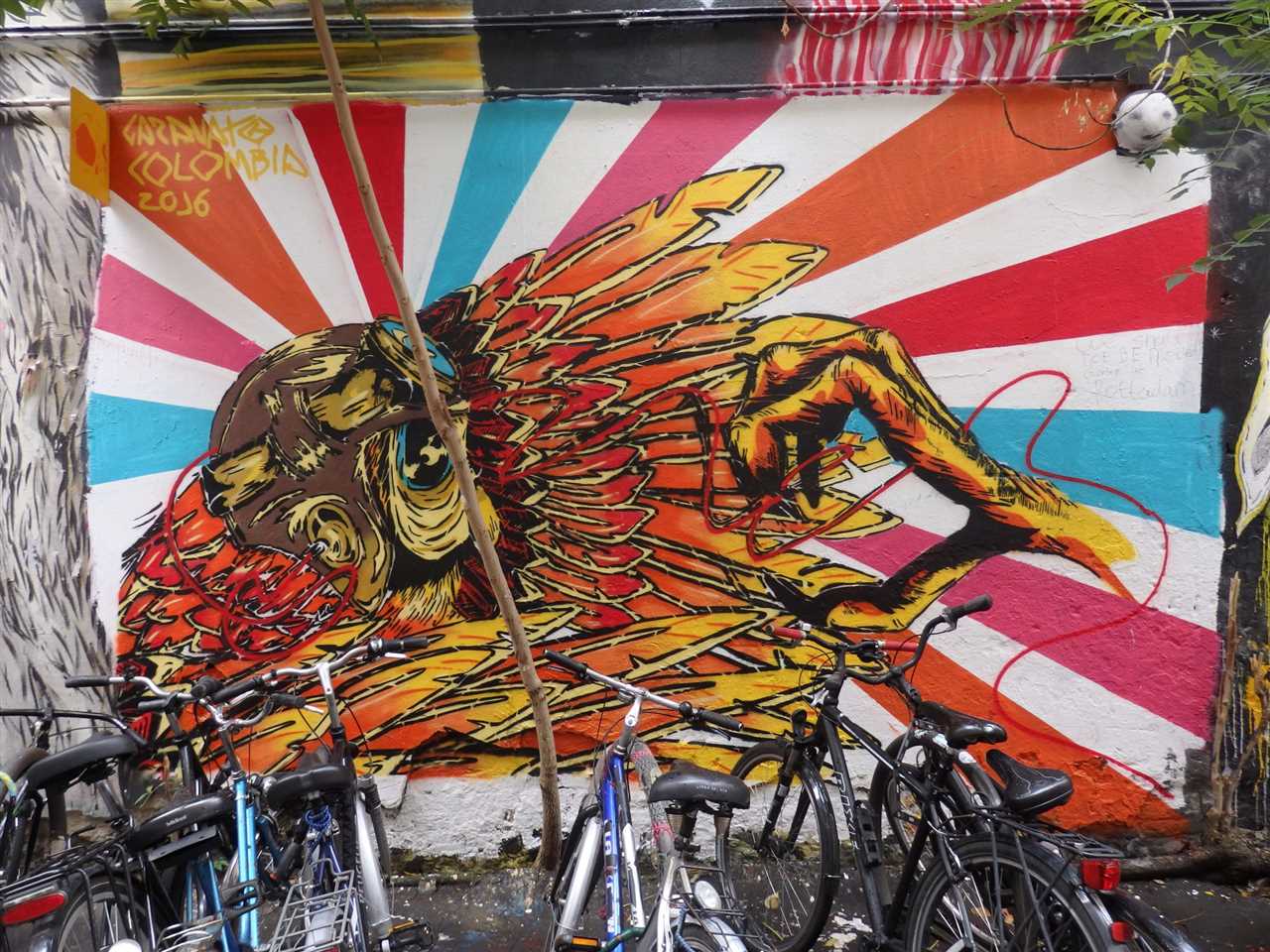
What started as a form of self-expression and rebellion has now become a global movement. Urban art can be found in cities all over the world, from the sprawling murals of Buenos Aires to the vibrant graffiti of Berlin.
Through its evolution, urban art has transformed public spaces into open-air galleries and challenged traditional notions of art. It continues to inspire and provoke, reminding us of the power of creativity and the importance of embracing diversity.
Exploring the Murals of Decazeville
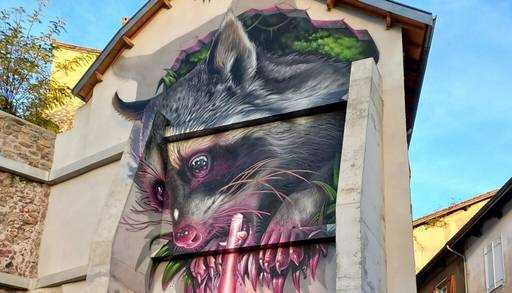
Decazeville, a charming town located in the southwest of France, has been transformed into a living art gallery thanks to its vibrant street art scene. The urban mural painting movement has taken hold of the city, with artists from all over the world leaving their mark on the walls.
As you wander the streets of Decazeville, you will be amazed by the variety and beauty of the murals that adorn the buildings. Each mural tells a unique story, reflecting the history and culture of the town. From stunning portraits of local residents to abstract designs bursting with color, there is something to capture the imagination of every passerby.
Another popular mural in the town is “The River of Creativity,” created by Spanish artist Maria Gomez. This colorful masterpiece portrays a flowing river filled with various artistic elements, including paintbrushes, musical notes, and dancing figures. The mural celebrates the creativity and artistic spirit of Decazeville.
One of the unique aspects of Decazeville’s street art scene is its commitment to community involvement. Many of the murals have been created through collaborative efforts between local artists, residents, and even school children. This has not only given a sense of ownership to the community but has also fostered a deeper connection between the art and the people who live in Decazeville.
Exploring the murals of Decazeville is not only a visual feast but also a journey of discovery. Each artwork holds a story, waiting to be unraveled by those who take the time to observe and contemplate. Whether you are an art enthusiast or simply a curious traveler, Decazeville’s murals are sure to leave a lasting impression on you.
The Influence of Street Art on Culture
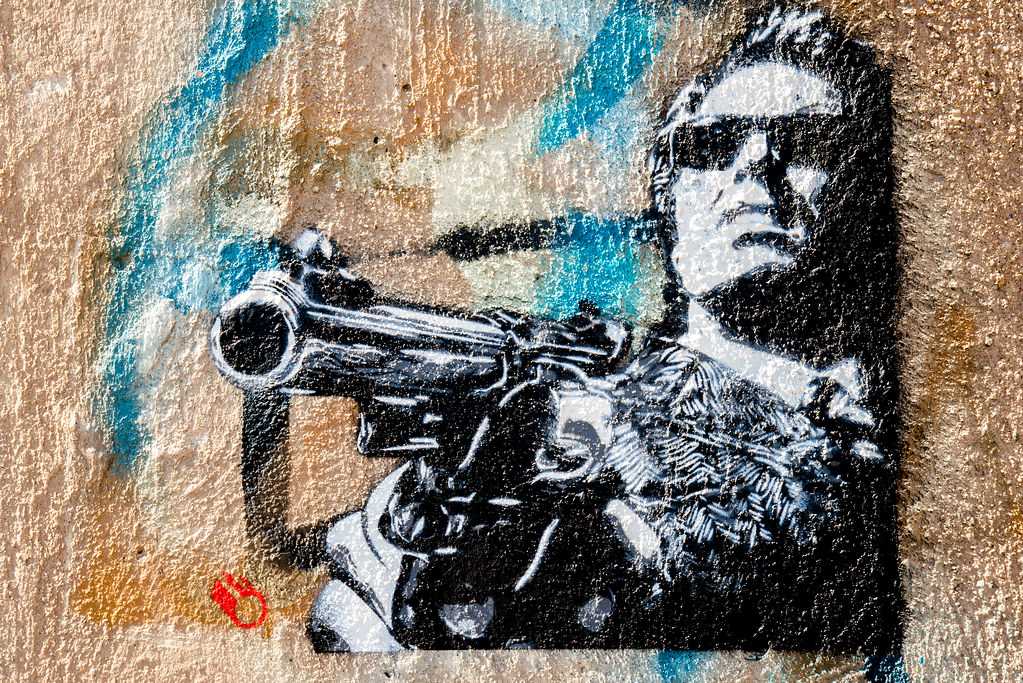
Street art has become a powerful form of artistic expression that has deeply influenced contemporary culture. It has challenged traditional notions of art by breaking free from the confines of galleries and museums, taking art out into the streets and making it accessible to everyone.
One of the most significant impacts street art has had on culture is its ability to give a voice to marginalized communities and champion social justice causes. Through powerful and thought-provoking images, street artists have raised awareness about issues such as racial inequality, poverty, and environmental degradation.
Street art has also played a significant role in revitalizing and transforming urban areas. Abandoned buildings and public spaces have been turned into vibrant and colorful art galleries, attracting tourists and locals alike. This has not only beautified neglected areas but also boosted local economies and helped foster a sense of community pride.
Furthermore, street art has inspired a new generation of artists and creatives. Its unconventional nature and DIY spirit have influenced various art forms, including graphic design, fashion, and even advertising. Street art has shown that art can be spontaneous, raw, and free from the constraints of traditional techniques, opening up new possibilities for artistic expression.
The influence of street art on culture extends beyond the physical realm. It has become a powerful tool for communication and a medium for engaging with diverse audiences. Social media platforms have played a crucial role in amplifying street art’s impact, allowing it to reach a global audience and spark conversations about art, society, and political issues.
Embracing Street Art: A Cultural Phenomenon
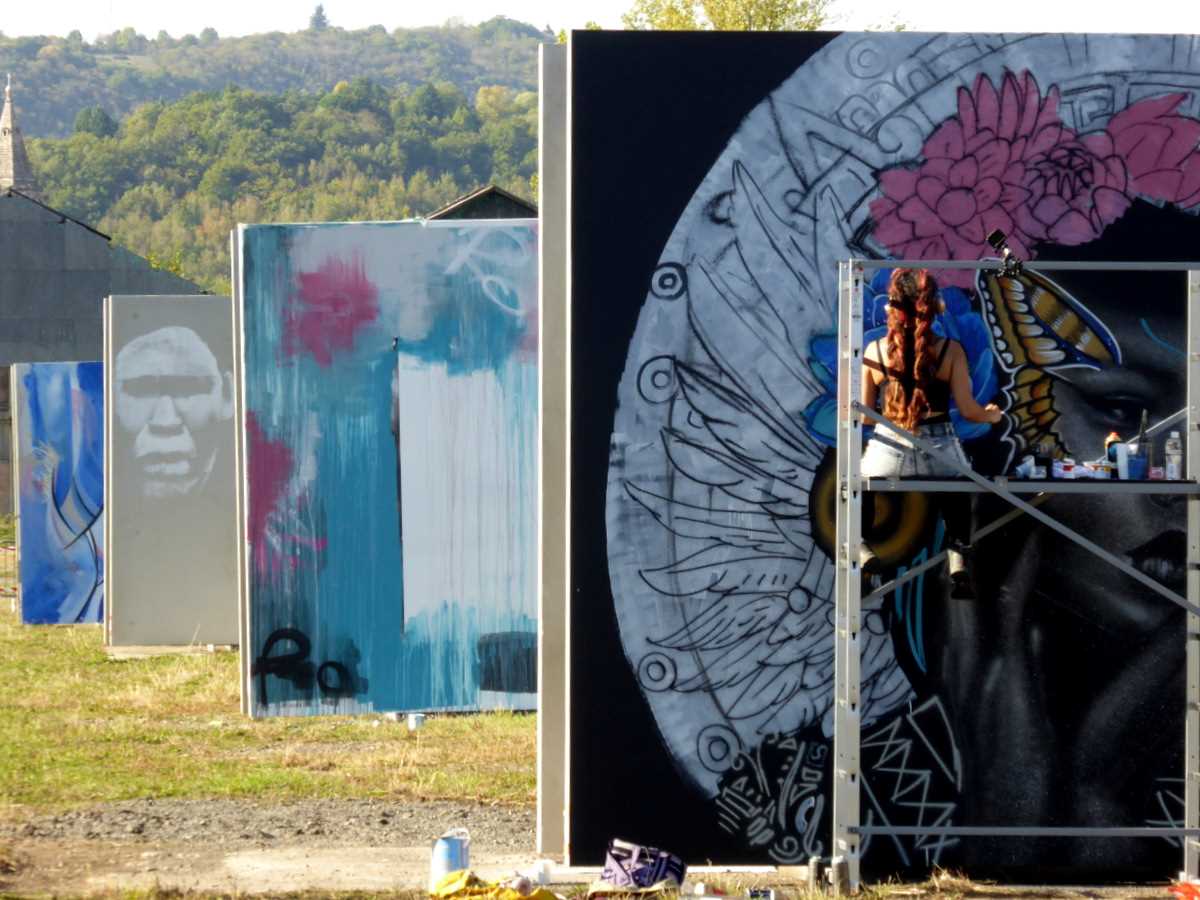
Street art has become a cultural phenomenon that is embraced by cities around the world. What was once considered graffiti and vandalism is now celebrated as a form of artistic expression and a way to transform public spaces.
Street art has its roots in the graffiti movement of the 1960s and 1970s, when artists began using public spaces to showcase their work. These early pioneers paved the way for a new generation of street artists who continue to push boundaries and challenge traditional notions of art.
One of the reasons why street art has gained so much popularity is its accessibility. Unlike traditional art galleries, street art is free and open to everyone. It can be found on the walls of buildings, in alleyways, and even on sidewalks. This accessibility allows people from all walks of life to engage with and appreciate the art form.
Street art also has the power to transform public spaces and make them more vibrant and dynamic. Murals and graffiti can turn a dull wall into a colorful masterpiece, and a simple alleyway into an immersive art experience. In this way, street art can contribute to the revitalization and regeneration of a neighborhood or city.
Furthermore, street art provides a platform for artists to express their views and make social and political statements. Many street artists use their work to raise awareness about important issues such as inequality, climate change, and social justice. By bringing these issues to the public eye, street art can spark conversations and inspire change.
Street art has also become a tourist attraction in many cities. Travelers seek out the best street art spots, taking photos and sharing them on social media. This has led to the rise of street art festivals and guided tours, where visitors can learn about the artists and the stories behind their artworks.
Overall, street art has become a cultural phenomenon that is celebrated for its accessibility, transformative power, and ability to raise awareness. Whether it’s a small sticker on a lamppost or a large-scale mural on the side of a building, street art has the power to captivate and inspire. It is an art form that continues to push boundaries and challenge traditional notions, making it an essential part of the cultural landscape.

I am a mural enthusiast and a fervent admirer of street art. Rather than creating murals myself, I am passionate about collecting them. My love for street art knows no bounds. I am dedicated to curating and cherishing these artworks that grace the streets. My collection stands as a testament to my profound appreciation for this form of artistic expression.
read about me



